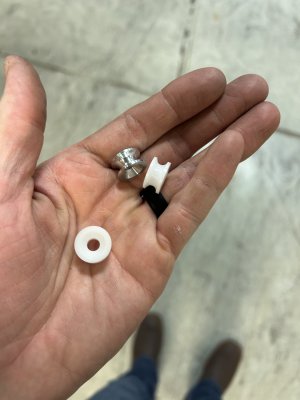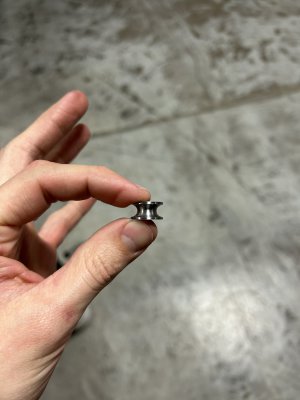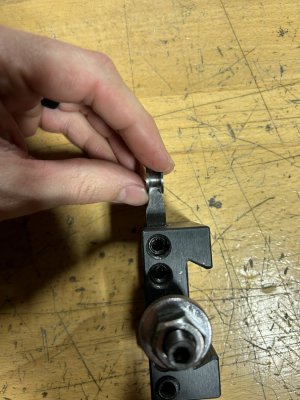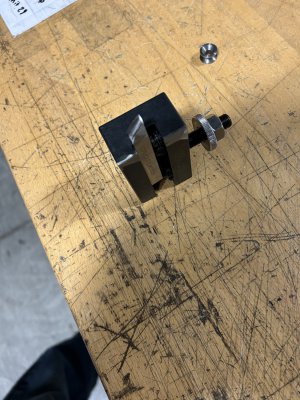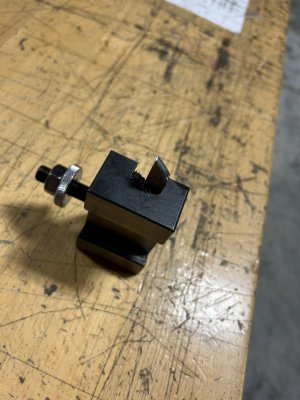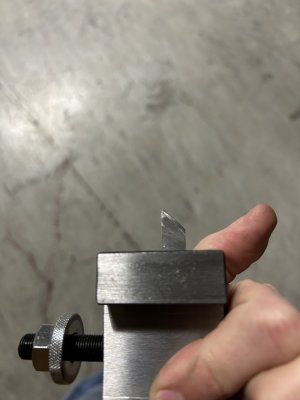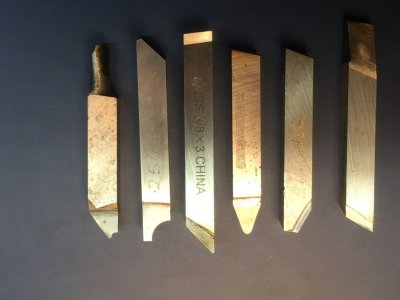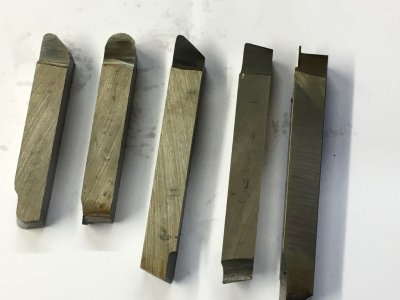- Joined
- Apr 24, 2021
- Messages
- 462
I have been making parts for a very large expensive machine at work. It looks like a mini pulley but it has a smooth radius instead of a v groove. I ground a tool by matching the shape of the part, but I know I didn’t do it correctly because I don’t have much experience. I can grind tools that work, but unless it’s a threading tool, I’m sure my angles and clearances are all off. The parts look and function ok and the tool gets the job done, but it’s by no means cutting efficiently.
My questions are 1. How do you measure a part like this properly?
2. How do you calculate the angles and reliefs for the form tool?
The diameter of the part is only ,595. I made some out of hdpe to test my form tool, then made the rest out of aluminum. I’ve attached pictures below. I will post a picture of my parts (2 in plastic 1 in aluminum) then I will post the form tool and the original steel part.
My questions are 1. How do you measure a part like this properly?
2. How do you calculate the angles and reliefs for the form tool?
The diameter of the part is only ,595. I made some out of hdpe to test my form tool, then made the rest out of aluminum. I’ve attached pictures below. I will post a picture of my parts (2 in plastic 1 in aluminum) then I will post the form tool and the original steel part.


